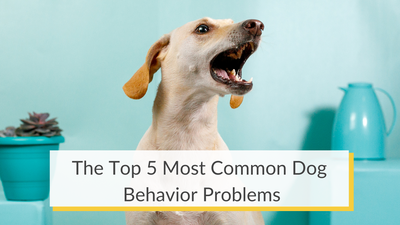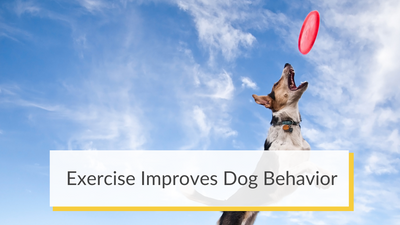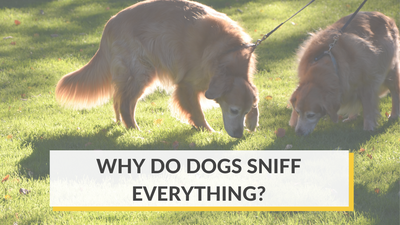Separation anxiety may be difficult to handle, especially when you hear the sad sounds your dog makes when you’re about to leave for work. How do you identify separation anxiety in your pup, and what do you do about it?

4 Signs of Separation Anxiety
- Barking or howling. If your dog vocalizes for a long time after you leave the house (you may hear about this from your neighbors), this is a huge tipoff that they’re missing you excessively and feeling uneasy on their own.
- Attempts to get out of the house. If you come home to doors raked with scratch marks, or lots of smudgy windows, this is a sign your dog was attempting to get out and find you.
- Destruction. Chewed pillows? Unstuffed sofa? Your dog isn’t being malicious - they’re expressing anxiety. Scolding your dog for this is not the answer; it just makes them feel worse.
- Accidents. Even if your dog is housetrained, they may urinate or defecate while you’re gone. (If they do it in your presence, this is likely not an issue of separation anxiety.)

Separation anxiety is rough on both dogs and their owners. So what next? Try these top tips to get your pup feeling relaxed when you’re out.
Accustom your dog to your departure cues. Your dog knows that when you pick up your keys, you’re on your way out. Start picking up your keys when you go from room to room, or just as you go about your household activities. Over time, usually several weeks, this repeated routine will eventually calm your dog’s panic response to this cue.
Desensitization.
Leave the house for small periods of time, like 5 minutes, and reward your dog when you return. Gradually lengthen the time, and give higher-reward treats. It's most effective to begin accustoming your dog to your absence before you go back to work for a full day.
No dramatic greetings.
We know it’s tempting to give your dog a hug and a kiss when you leave or go, but this tells your dog that something “big” is happening. Instead, play it cool. When you return home, allow a couple minutes to pass before you greet your pup.
Make a safe place.
Set aside a room or a corner of a room for your dog when you’re out. You can keep your dog’s toys here, as well as clothing that smells like you. This will keep your pup from destruction, and also give them a sense of routine and safety.

When it comes to separation anxiety, Furbo is your best friend: not only can you keep an eye on your dog, but you can interact with them as well. You’ll get notified of your dog’s barking and movements, and be able to speak to them through the 2-way microphone. Plus, you can toss them treats throughout the day - always a pup-pleaser.
Sally, a 3-year-old greyhound adoptee, is one dog whose life was changed by Furbo. She was rehomed twice, but returned to the kennel both times due to separation anxiety. So, her third owner turned to Furbo for a solution!
















